The many sides of Helianthus tuberosus —
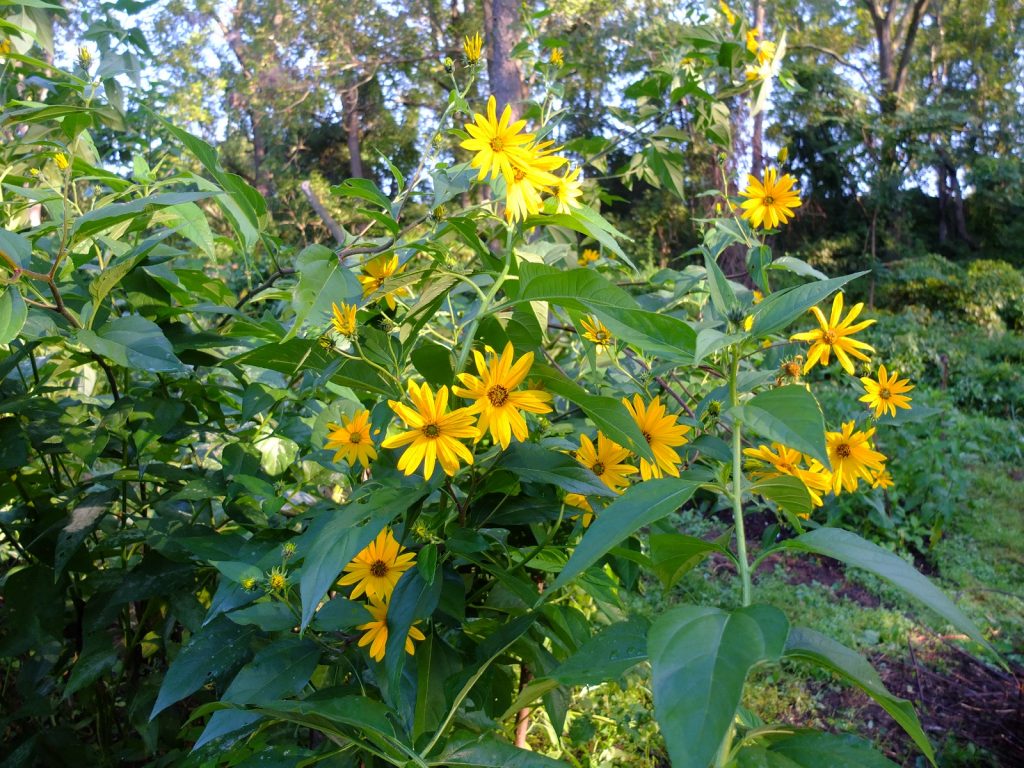
Jerusalem artichoke, Helianthus tuberosus, is not from Jerusalem nor is it an artichoke! Some use the shorthand “sunchoke” as an alternate name; others simply call Helianthus tuberosus “sunroot,” and this is what I prefer. It’s a tuberous perennial sunflower in the Asteraceae family (or Compositae) native to eastern & central North America. It has been cultivated for centuries as a root crop by indigenous peoples and western farmers alike. To the Cree who lived beside Lake Superior, it was called askipaw, and to the Huron north of Lake Ontario it was called skibwan. Buffalo Bird Woman in interview with Gilbert Wilson (vol. 16, 1914) names the plant kakca or kaakca in Hidatsa. Other names for this plant in indigenous languages are pange (Omaha-Ponca), panhi (Winnebago), and kisu-sit (Pawnee). In Passamaquoddy-Maliseet the word for the tuber is ktahkitom (k’tAH-kee-tOM).
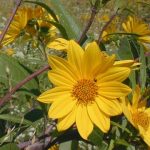
Helianthus tuberosus is a hexaploid, meaning it has six sets of chromosomes, and genomic skimming studies reveal that it is probably a recursive hybrid of the diploid sawtooth sunflower (Helianthus grosseserratus) and the tetraploid hairy sunflower (Helianthus hirsutus). Speciation through hybridization — pretty neat!
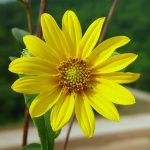
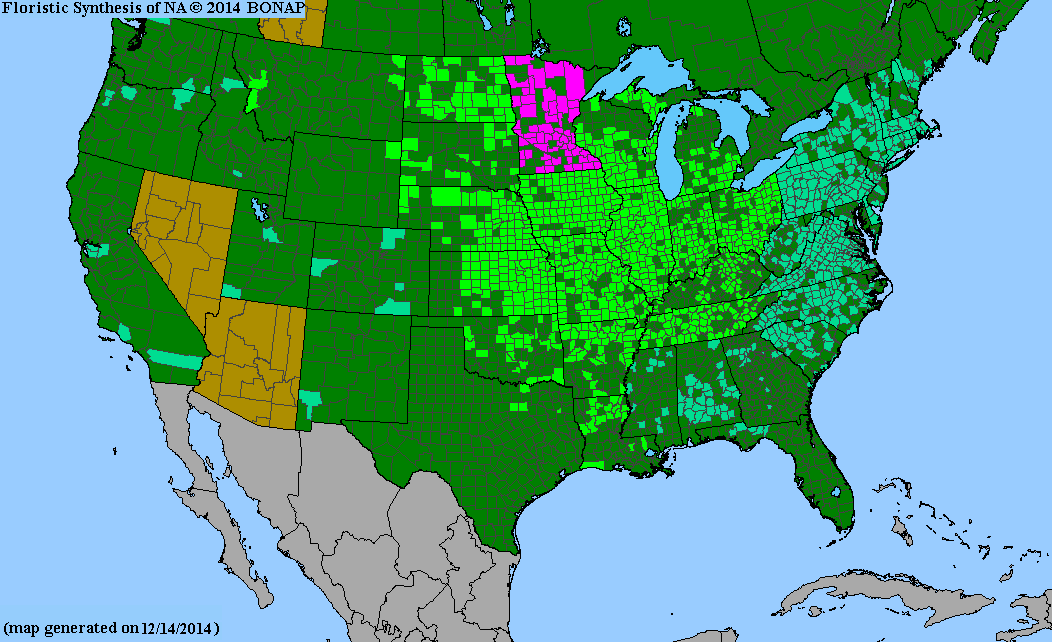
While some of the details in the relationship of Helianthus tuberosus and human beings remain obscure, we know that human planting greatly expanded the range of sunroot outside it’s midwestern origins. Human beings quickly recognized the virtues of the sunroot as a food plant and planted it to great advantage.
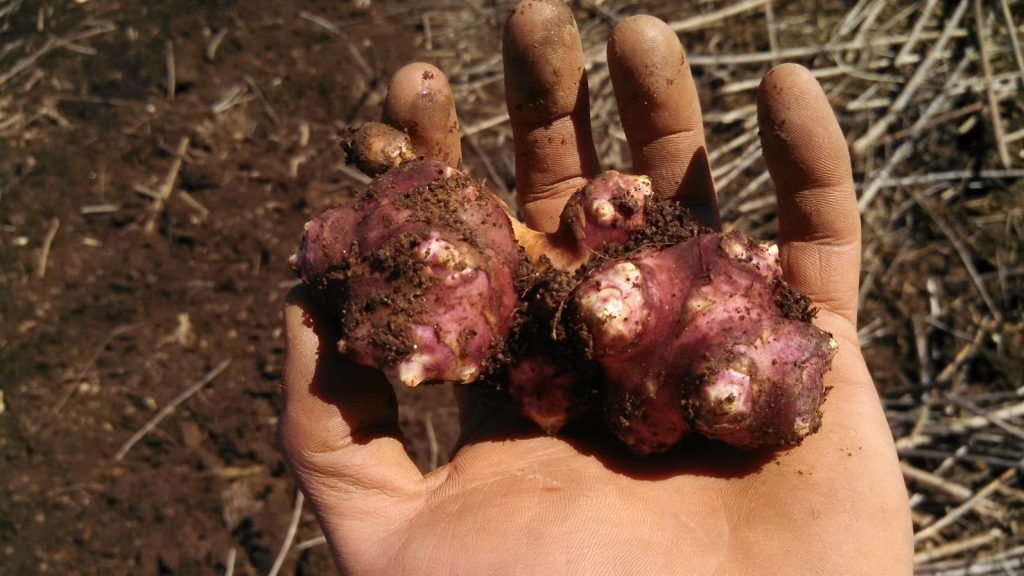
Sunroot has a tuber rich in inulin, a complex sugar which is a prebiotic, meaning that as it passes through the gastro-intestinal tract it changes the composition of the gut microbiota. This quality has lent the sunroot the dubious distinction of inducing flatulence (they call it fart-a-choke for a reason!), as the prebiotic inulin is not comfortably digested by many modern gut biomes — in other words, consumption of the raw tubers can lead to gas and stomach upset. However, if cooked properly, steaming or roasting for long duration, the inulin sugars in the sunroot will turn brown as they convert to fructose. After the caramelization process the sunroot becomes readily digestible to the majority of stomachs. The flavor also becomes very sweet and makes for delicious eating! For those unconcerned about digestive issues, they will find the raw flavor of the sunroot quite delicious, with a crunchy-nutty-juiciness.
Identifying a Jerusalem artichoke or sunroot in the wild is more challenging than it would seem. There are several other wild perennial sunflowers in the Helianthus genus which look similar enough to sunroots to cause confusion. Species such as Helianthus decapetalus, the ten-petal sunflower, and Helianthus strumosus, the pale-leaf woodland sunflower, are fairly close look-alikes. And while H. decapetalus does not form root tubers which definitively rules out H. tuberosus, H. strumosus does have edible tubers much like H. tuberosus so mistaking the two is easy though not a serious problem. (For more information about the identification of H. strumosus the pale-leaf woodland sunflower, see the Arkansas Native Plant Society.)
The Jerusalem artichoke grows best in full sun but persists in partial shade.
Sunchoke leaves are a rich green color, broad and oval, with secondary branches growing out of the junctures of stem and leaf petioles.
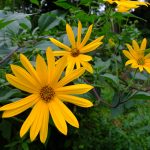
The stem is green to slightly reddish and covered in small, bristly hairs. Branching is usually opposite towards the base of the plant, but as your eyes find their way up towards the crown of the plant there is a change to alternate branching. The plant stands anywhere from 2 to 16 feet feet tall at maturity depending on conditions, but most commonly around 6 to 8 feet high. In the late summer these plants begin to flower profusely with bright yellow blooms, and may continue to do so for a couple months. (see Illinois Wildflowers)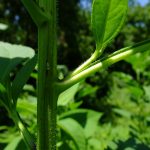
Sunroots are a better source of protein than potatoes, and contain more vitamins and minerals. Sunroots are a good source of potassium, iron, magnesium, thiamin (vitamin B1), riboflavin (B2), niacin (B3), pantothenic acid (B5), pyridoxine (B6), folates (B9), and ascorbic acid (vitamin C).
Keep in mind that members of the sunflower family bioaccumulate heavy metals such as lead from the soil in areas where the soil has been polluted. Be aware of the history of any industrial activity where your sunroots are growing. Any heavy metals that get hyperaccumulated inside the tissue of sunflowers like Helianthus tuberosus will also accumulate in your body and poison you if you eat them. The bioaccumulative abilities of sunflowers makes them valuable however in phytoremediation: using plants to remove toxins from soil.
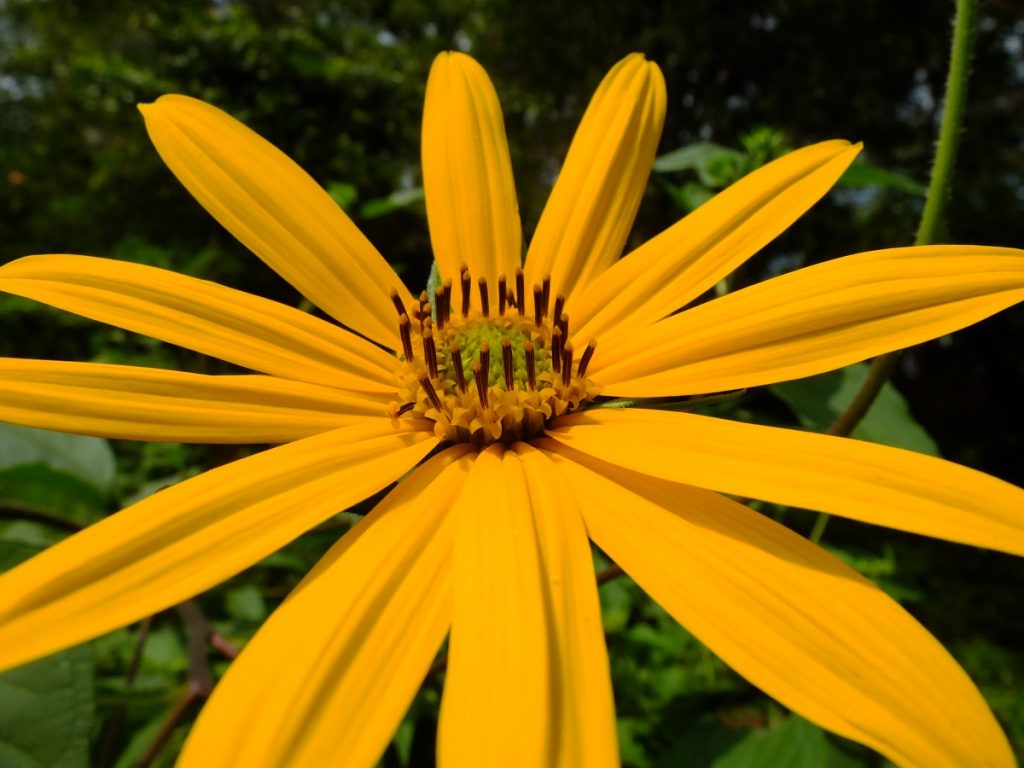
As an agricultural crop sunroots grow amazingly well on marginal, nutrient-poor soils and persist through drought where annual rainfall is as low as 12 inches per year. Average yield-per-acre is about 15 tons, making sunroots competitive with corn which yields about 20 tons/acre. But whereas sunroots are low- to no-input, corn is high-input energy intensive agriculture and problem child of the industrial food system.
The high inulin content of sunroots makes them great candidates for the production of ethanol as biofuels. Among Helianthus tuberosus many virtues, it could lead the way into a renewable energy future without petroleum.
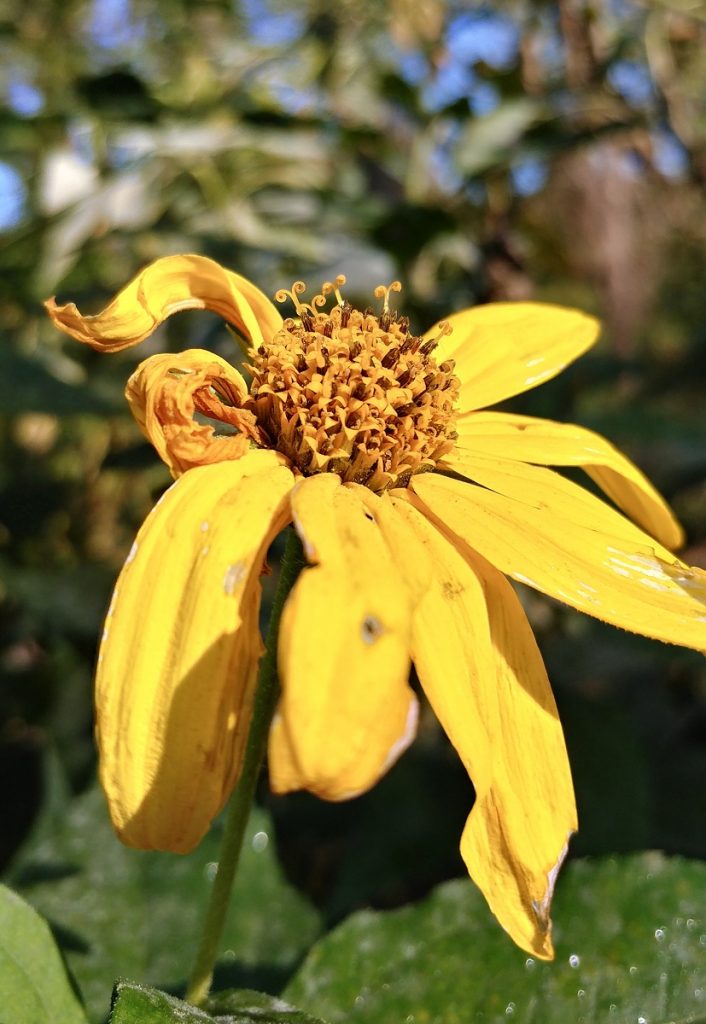
Many sources make the claim that Jerusalem artichoke is sterile or that if they are fertile they set little if any seed. These claims are misleading and the result of the limited way in which most sunroots are grown.
Helianthus tuberosus is highly self-incompatible, meaning that it is an outcrossing species requiring a certain level of cross-pollination between genetically distinct individuals. Because most sunroot patches are clonal, started vegetatively from tubers of only one or two varieties, there usually isn’t enough genetic diversity in one spot for fertile seed production.
As sunroots reproduce abundantly from even small broken off pieces of their tuberous roots (making them almost impossible to eradicate), a lack of seed fertility isn’t a problem for most people. But from a perspective that looks at genetic diversity and whole populations, and especially as a plant breeder, this lack of fertility proves problematic.
To get around this, collect as many distinct varieties as you can and plant them together. In 2017 I grew out together a collection of about a dozen named varieties and several additional wild tubers. I also planted out some true seed I had collected from 2016.
The results speak for themselves — a high degree of natural cross-pollination led to fertilization of nearly every flower in each head. The flower heads swelled in size and grew to double or triple the size of unfertilized Jerusalem artichoke flowering heads.
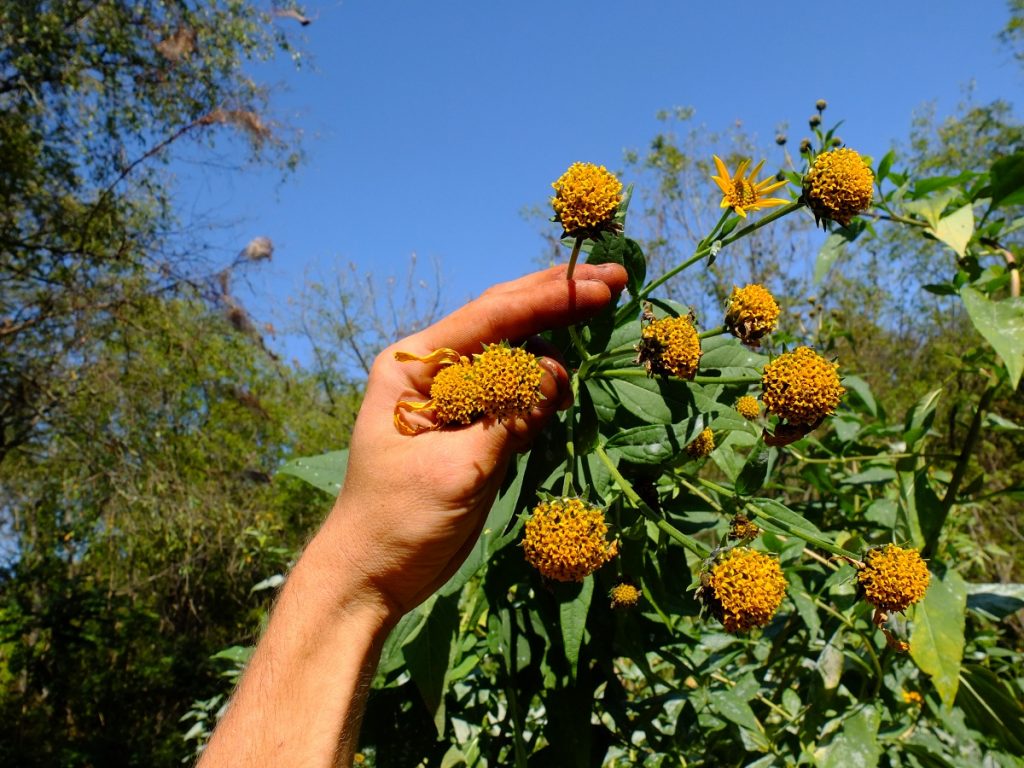
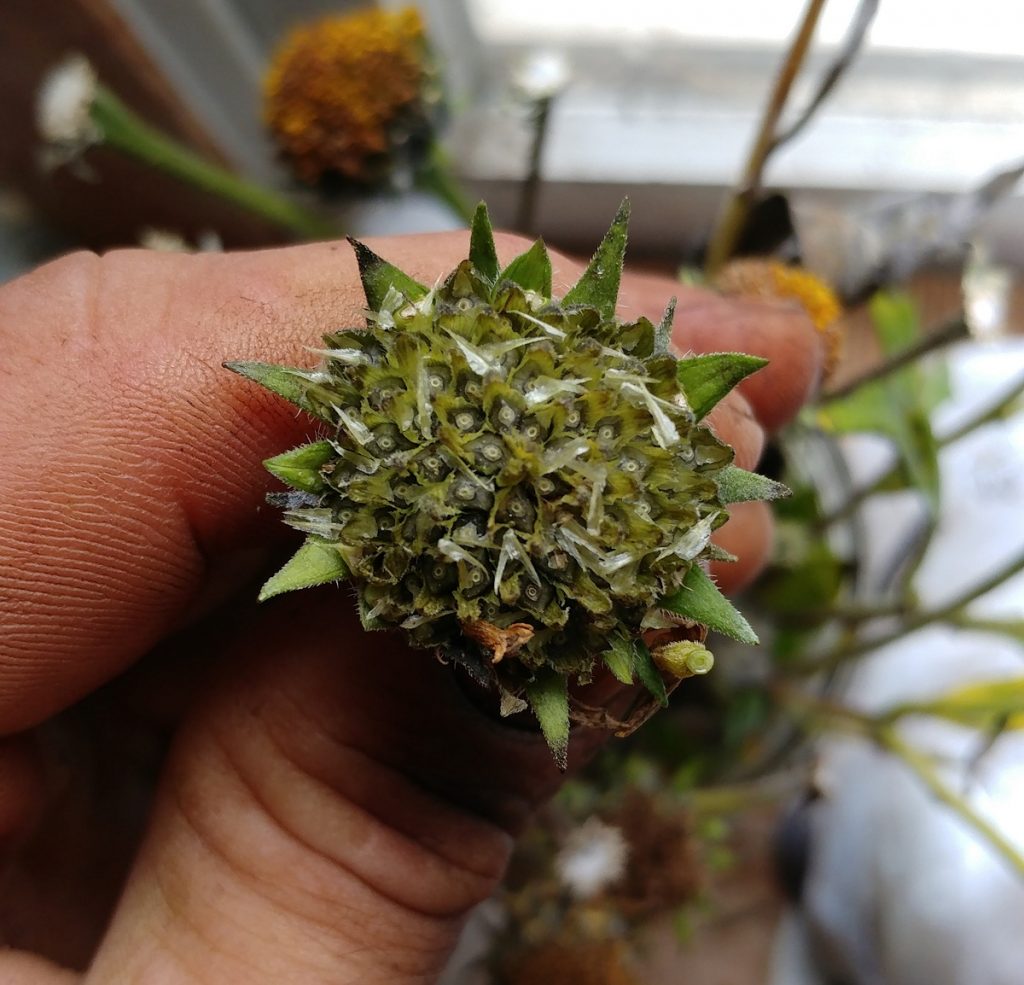
Sunflower seeds of the annual sunflower Helianthus annuus are a rich source of oil, being around 21% fat. Annual sunflower seeds are much larger than the seeds of sunroot, but like their large-seeded relative sunroot seeds too are a rich source of oil. This makes viable Helianthus tuberosus seed a hot item in the bird neighborhood. Fertilized sunroots attract tons of birds around seed-time in the fall!
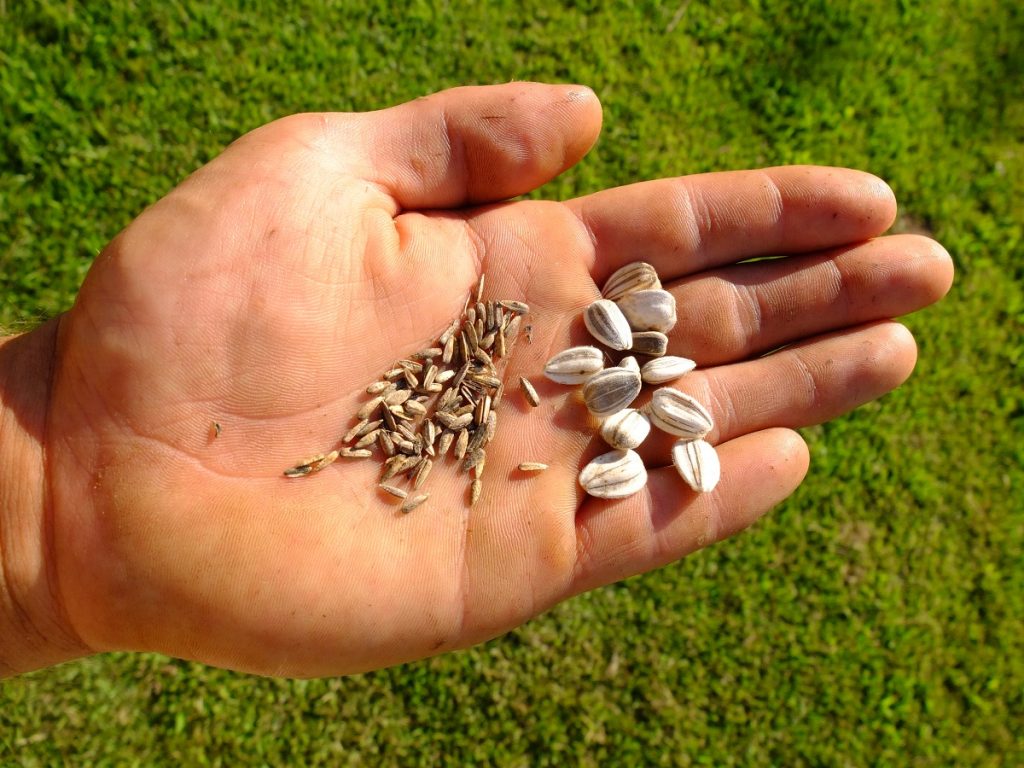
You’ll have to bag the seed heads to keep the birds away or pick them early if you want to harvest your seeds. To pick them early, it helps to cut off the flowering heads along the stem below and place the stems in a glass of water like cut flowers. This will help the seeds to ripen a bit more before the seed heads are finally dried, threshed, and winnowed away.
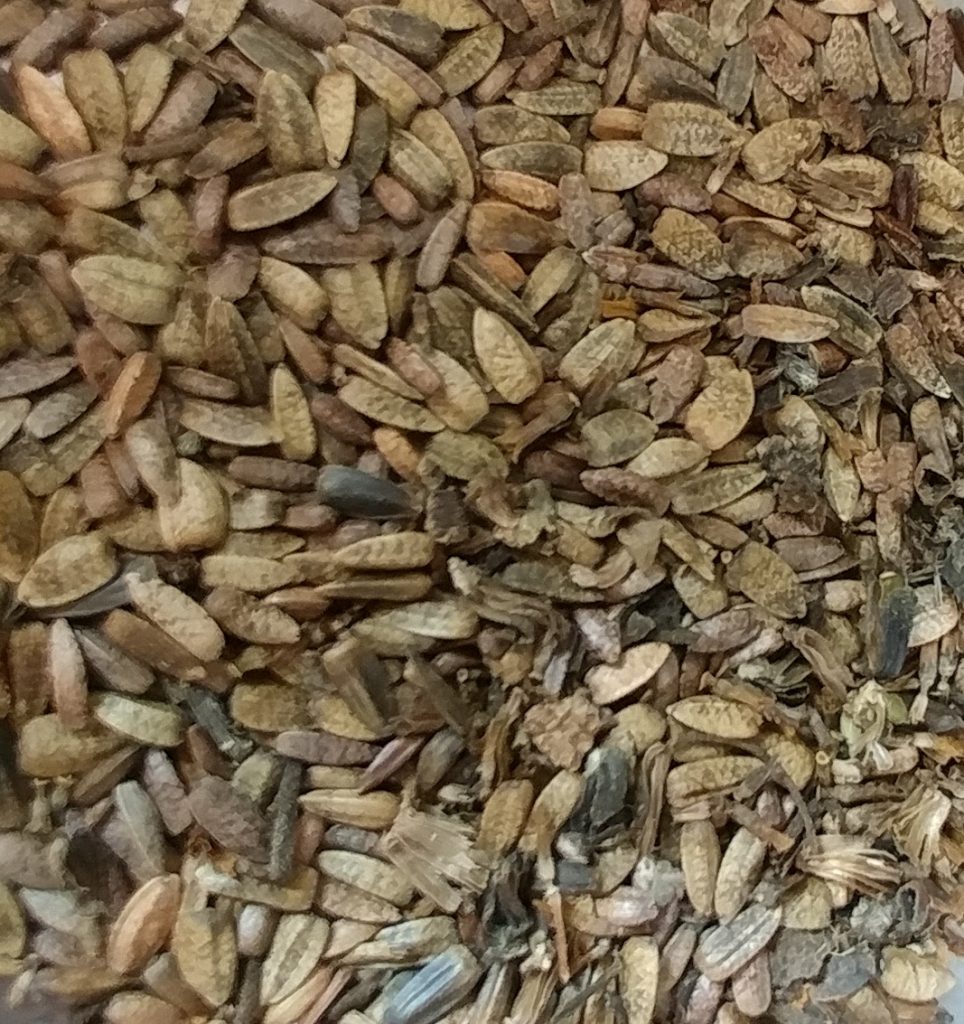
Of the few viable seeds harvested in 2016, I was able to grow 17 plants to maturity. Sunroots germinate, grow to nearly half their eventual height, form tubers, and flower (if there’s enough time in the growing season that is), all within their first year. That’s fast!
Jerusalem artichoke seed does not need any special treatment. Store in a cool, dry place. The seeds do not need cold moist stratification but will germinate when soil temperature and moisture levels are appropriate. I sow into the ground in the spring, but I don’t see why they couldn’t be sown in the fall instead.
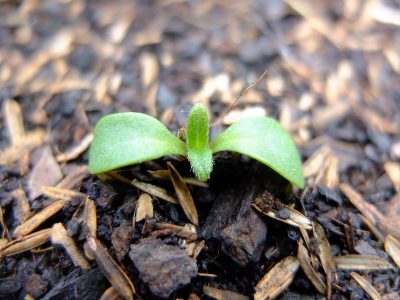
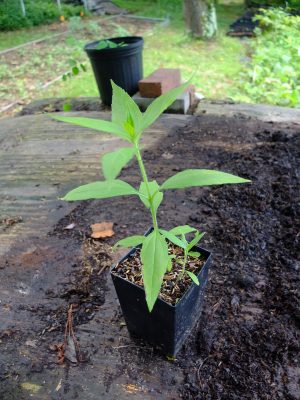
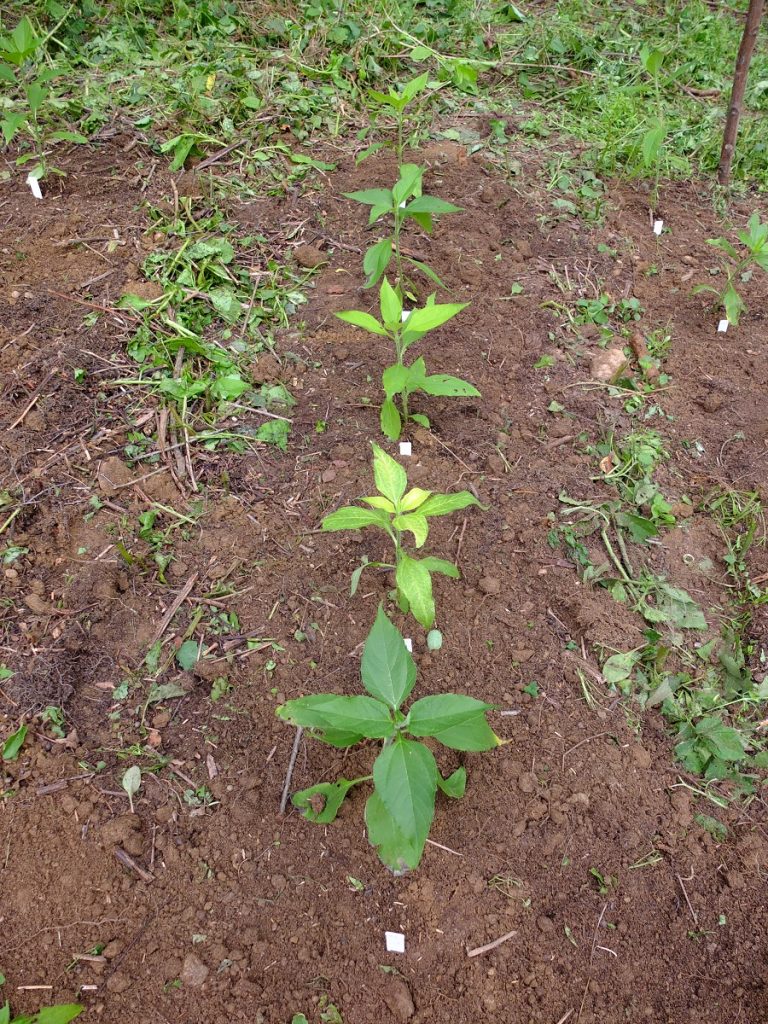
Some of the yields for first-year seed-grown plants were impressive. I kept each plant’s individual yields separated for the sake of citizen science, so that I could show an example of the variations in yield among the 17 different individuals. One plant formed only a dense cluster of root crowns at the base of the stalk rather than tubers, so I left it in the ground to watch next year.
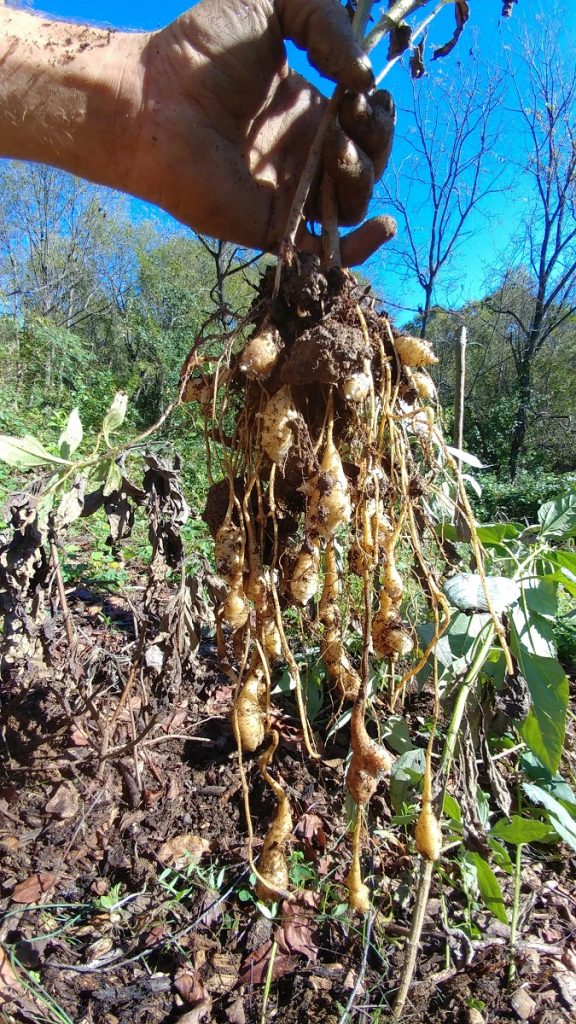
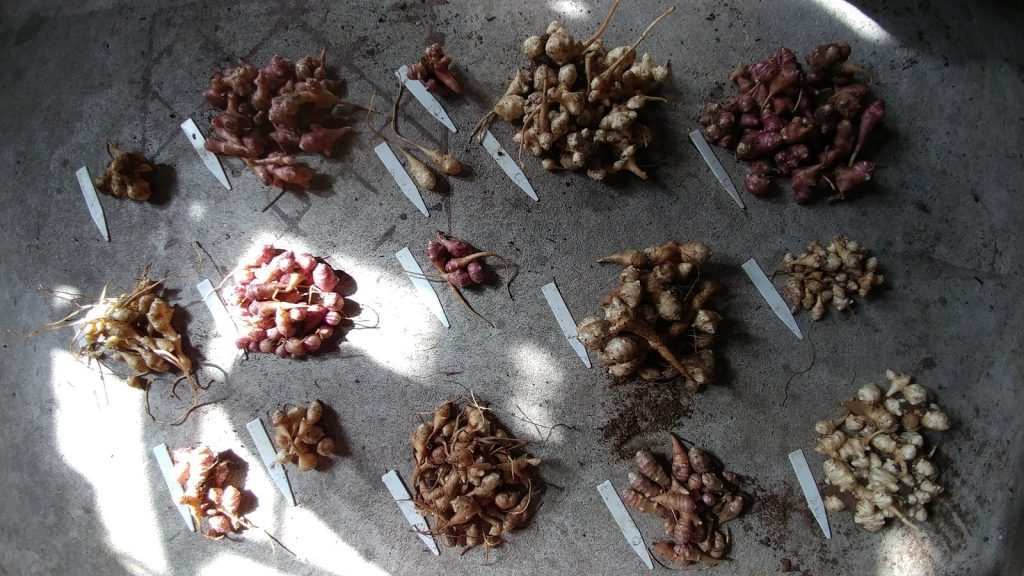
Growing sunroots from seed has many advantages. Growing from seed in a genetically diverse population allows the evolutionary processes of change and adaptation to unfold. Over time and the generations, seed-grown sunroots will fit themselves to their environmental microclimate and bioregion in better and better ways, eventually settling into a wild-form landrace of phenotypically stable but genetically diverse plants.
As growing from seed also results in a robust, fecund population of plants, this proves useful from a rewilding perspective where the goal is introduction of a wild species that can take care of itself without a lot of human intervention or disturbance. I find the power of seeds incredible, and with these sunroot seeds I can plant them whenever and wherever without having to carry tubers around with me.
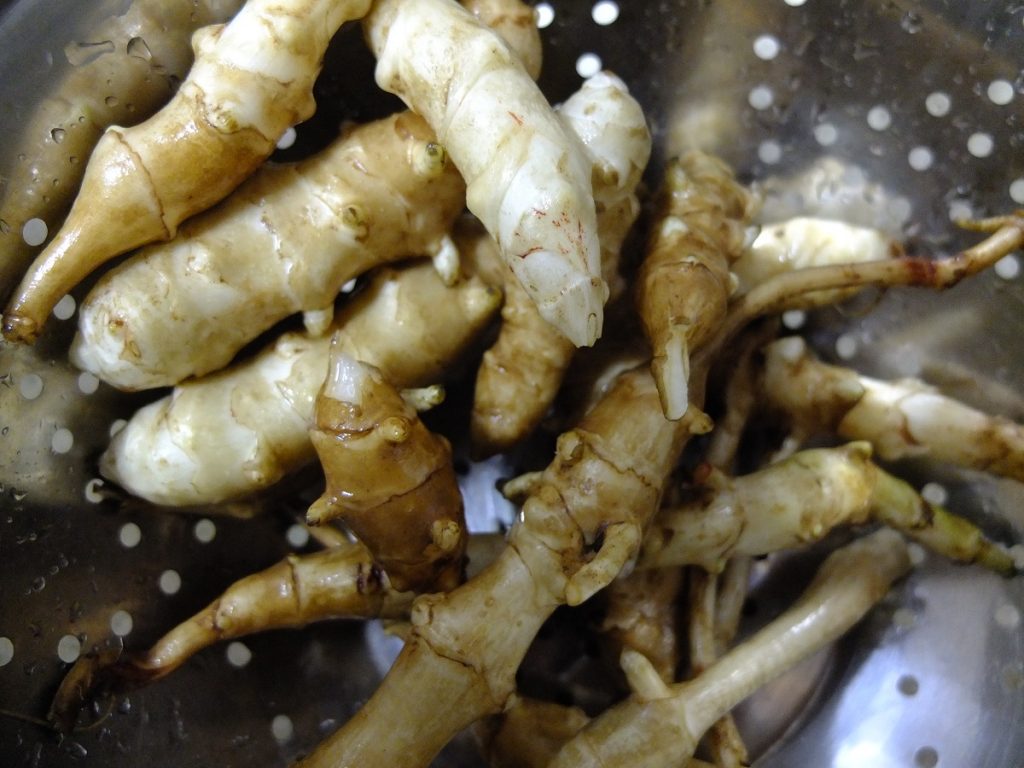
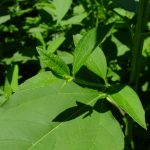
I love your personal experimentations. When I had a CSA in Barnardsville 5 years ago, we had a section of the garden where this was nearly taking over alongside Wingstem and Joe-Pye.
You are the greatest informative writer. Thank you for sharing. I grow “tuberous sunflower” (my name for it) mostly just because it is about the showiest sunflower I know. I like the idea of growing it from seed in the garden and harvesting all the tubers. I also agree it is a great wildlife food. Birds pick it clean. It grows abundantly in eastern Kansas in most roadsides, I love this plant.
point me to how to buy the jew sunflowers seeds. Thank you
Phil: send me an email, harvest@nomadseed.com. I have lots…
How does having seeds (abundant, at that) influence spread? I come across this article seeking knowledge regarding whether to plant sunflowers (black oil, gray-striped) near sunroots; will they mess with each other such that the former may be unrecognizable in seed and progeny form, and will the sunroots vivacious spreading nature be allowed to leap and bound outside of the trenches within which its tubers dwell currently? Thank you very much for any information and insight, that I may rest more easily.
Hi
We recently moved to Virginia from Denmark. We had Sunchokes in or garden back there, but we were not allowed to bring roots or seeds.
Is it possible to buy seeds over here, or do we have to wait until winter to buy roots in a store to restart a production?